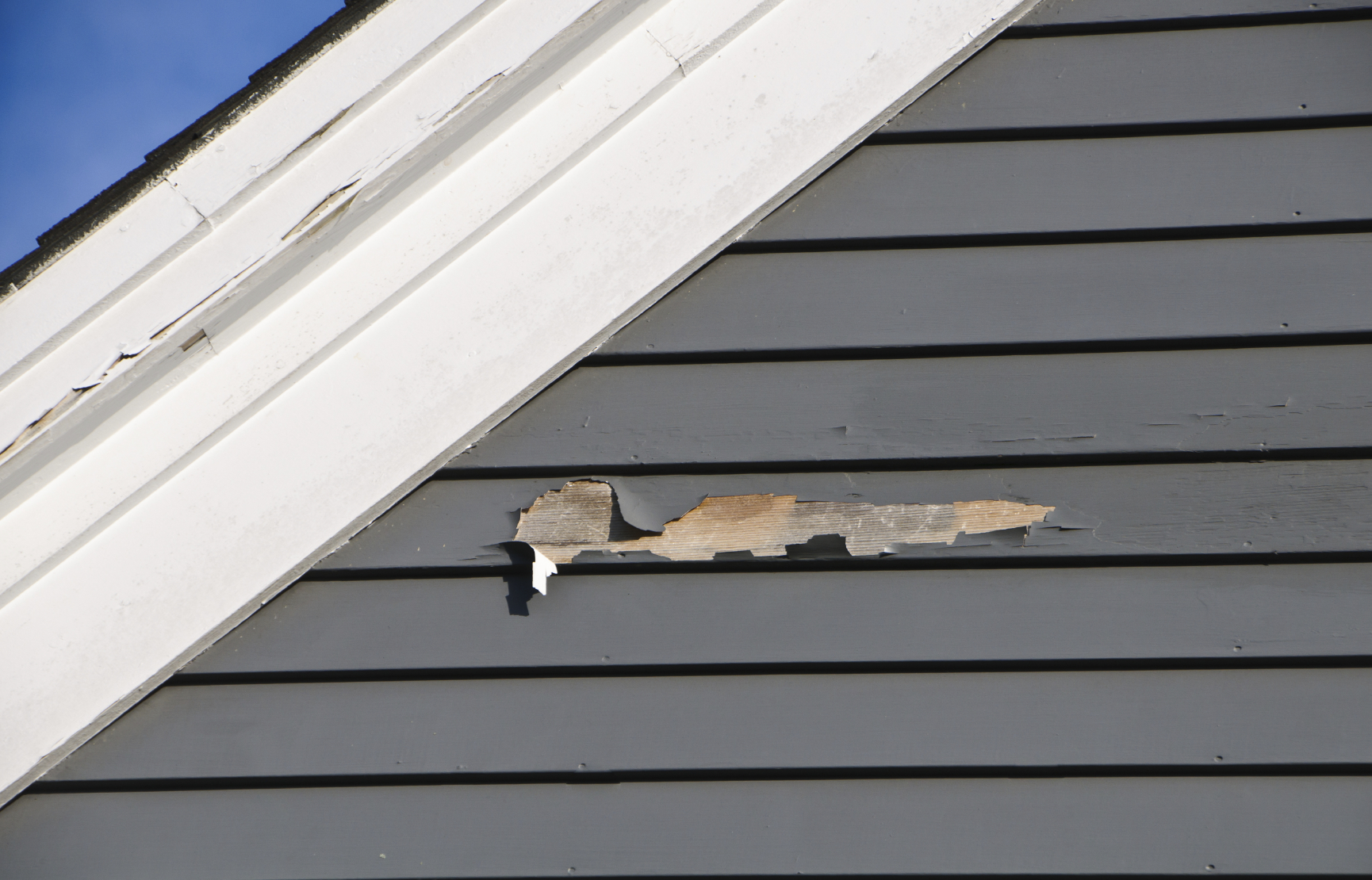Peeling and flaking paint on a home’s cedar siding not only makes the home look poorly kept, but it exposes the exterior to further damage and unplanned costly repairs.
The best solution is to have professionals do the job right, however, as a homeowner, you may want to try fixing the damage yourself. Here we’ll tell you just how you can do that.
Why does peeling happen?
Stain can peel off in sheets because of many reasons, including poor adhesion caused by slapdash prep, choosing the wrong paint, painting in low degree weather, painting on wet wood or skipping the cleaning process. In particular, the bad prep can be from a dirty, poorly prepared surface or because moisture migrating through the wood from behind the siding.
Moisture Problems
Sometimes moisture can, and will, seep in between the home and the siding, which can be the cause of the peeling or blistering of the paint in first place.
Solving your outside moisture problem is not so easy because it can be tough to know where the moisture is actually coming from. You can check the gutters, leaders and roof for any ways in which water may have had a path to drain its way underneath the siding. Some possibilities are:
- Missing or damaged flashing
- A leaking or damaged area of the roof
- Water vapor from inside the house due to inadequate ventilation
- Hanging or damaged gutters
These problems need to be fixed as soon as possible to keep your house from damaging the entire structure. You can check the severity of the situation yourself with the above fix list or hire someone to do it.
Spotting Other Trouble Areas
Attempting to clean the siding yourself can prove to be a big project. As soon as spring rolls around, we suggest getting outside and doing a walk around your home to spot any trouble areas. First, you will need to look for vulnerable spots that include:
- Exposed horizontal surfaces
- Joints
- Wood close to the ground
- Soffits
What are Soffits? Soffits are the “underside of an architectural structure such as an arch, a balcony, or overhanging eaves.
Repair the Peeling Siding
Once you’ve spotted those vulnerable spots or already peeling areas, here are a few basic steps you can take to clean and “fix” any problem siding peeling.
- Scrape off all the peeling bits
- Sand the remaining paint to a feather edge with 60-grit paper
- Kill the mildew on the old paint with a mix of diluted bleach and dish soap
- Rinse thoroughly by using a hose or even a power-washer on low setting
- When the bare wood is dry, sand off the decayed layer with 80-grit paper, taking care not to dish the siding.
Big Mistake: Clean That Surface!
One of the biggest mistakes we see homeowners and other painting companies make is by either hurrying the process or just poor cleaning which can ultimately create the same peeling issue again in the future!
Make sure to wipe the surfaces twice with denatured alcohol and clean rags. Then, follow that with a brushed-on coat of oil-based primer. Wait about an hour, then brush on the top coat of 100 percent acrylic paint.
Keep Watch & Save Your Home
You will need to watch the exterior of your home over the course of the year and especially in the spring-time. If you have had work or paid someone the prior year to fix and the paint still peels, then moisture migration is the likely culprit.
Just remember, a well-done exterior paint job from professionals looks good and protects a home from the elements. With the right preparation, products and technique, the paint job will last the homeowner for many years. Once you (or someone else) repairs these issues, however, you shouldn’t need to address any of these issues for at least another decade.


Have to take issue with the recommendation for using bleach to eliminate mold & mildew. Bleach (Sodium Hypochlorite) is a large molecule and will not penetrate porous surfaces, although the water base in all bleach solutions will penetrate the surface making it visually seem to have worked. In fact FEMA specifically now excludes bleach-based products to recover from mold due to flooding for this reason. Bleach does an exceptional job on non-porous surfaces, but there are a number of non-bleach products on the market that are very effective at killing sub-surface mold.
High-pressure hoses that accompany the pressure washers are made in several layers. Often, they will have some sort of wire network inside that will help in keeping it resistant to kinks.
As you have probably concluded already, there are so many choices when it comes to the powerful electric pressure washers.
This list has made it so much easier for me. Home owners need to know about cedar siding& painting, DIY, home repair tips. How to save your home is defined. Very excellent. Thank you so much. If you are looking same kind of valuable information, then can also visit hdpaintingservices.co.nz/.